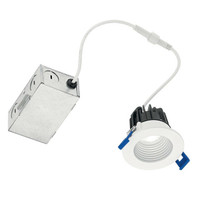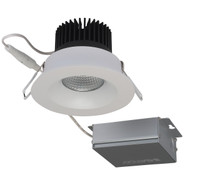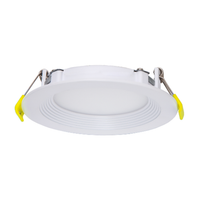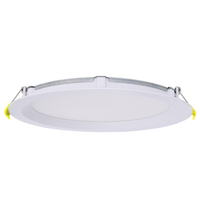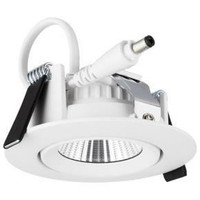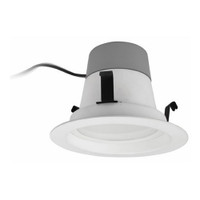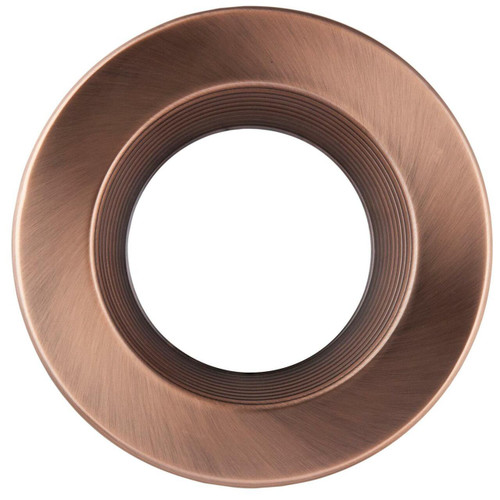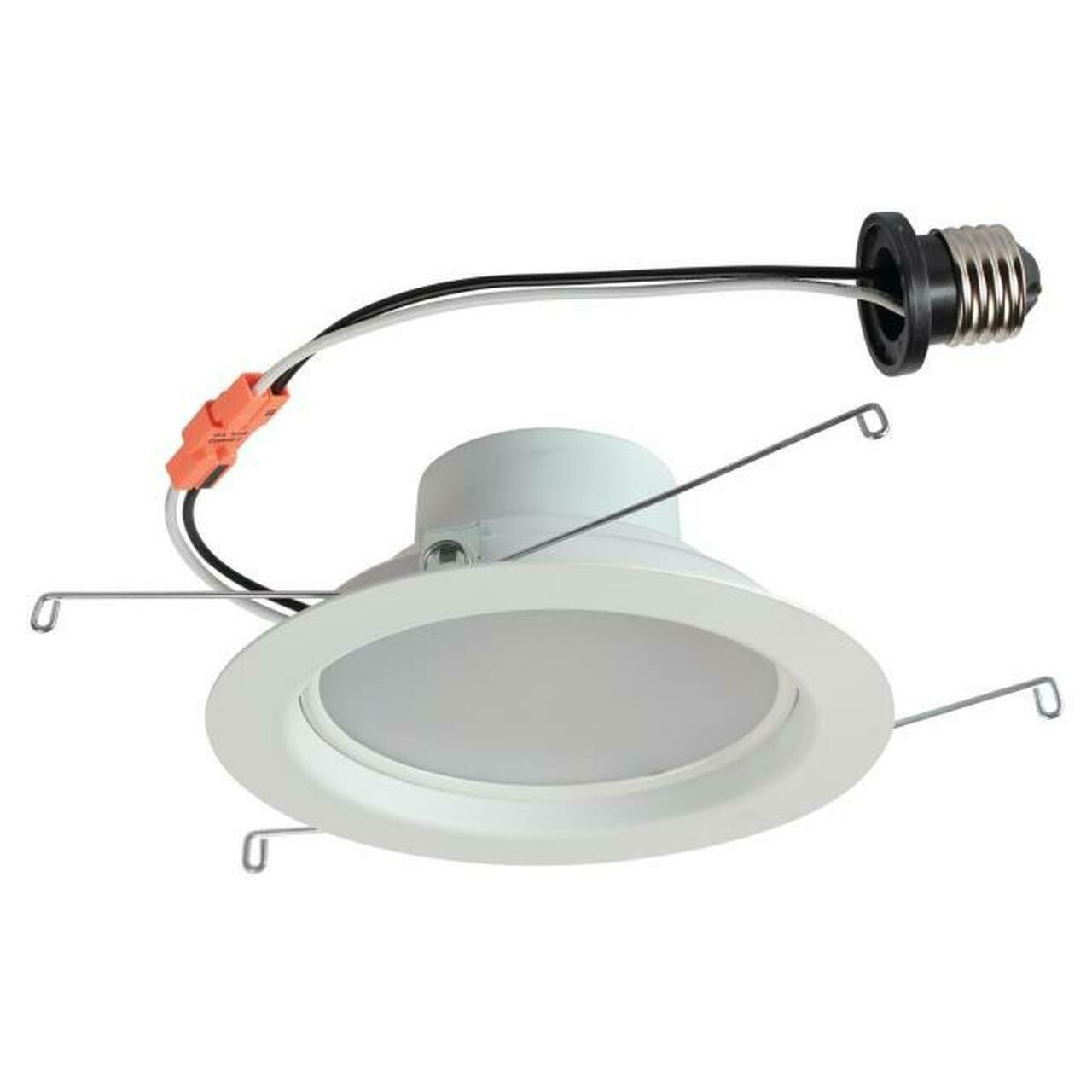
Recessed Lighting
Light Bulb Types & Shapes for Recessed Lighting
When considering recessed lights, pay attention to the type and size of bulb your fixture uses. Some recessed lights work with screw-in bulbs, while others use pin base bulbs. Different factors — color temperature, lumens and wattage — affect the quality of light in a room. Halogen and LED bulbs are the most common bulbs for recessed lights.
LED lighting helps lower energy costs, and the bulbs are cool to the touch. In general, look for a warm white color temperature for living rooms and bedrooms, a bright white color temperature for kitchens and workspaces and a daylight color temperature for reading nooks and studies.
Recessed Light Bulbs Are Categorized By The Following:
Type of Recessed Downlight Light Bulbs
The four light bulb types used in residential recessed lighting are incandescent, halogen, compact fluorescent (CFL), and light emitting diode (LED).
Incandescent
Aka traditional light bulbs are the oldest and least efficient technology. Electrical current passes through a tiny wire (filament) causing it get hot and glow. On average only 10% of the energy they consume is converted to light, with the remaining 90% being converted to heat.
Halogen
Light bulbs are a type of incandescent lamp. The difference is that the filament inside the lamp is enclosed in a small quartz capsule which contains a halogen gas. Halogen lamps burn brighter (and hotter), and last longer than traditional incandescent bulbs.
Compact Fluorescent Lamps (CFL)
Are a very energy-efficient alternative to incandescent lamps. They use a gas-filled tube that is twisted or folded in a compact way that allows it to be as long as possible while taking up the same space as a standard light bulb. As electricity flows through the gas in the tube, a phosphor coating on the inside of the tube emits light.
CFLs require a ballast to regulate the current flowing through them which is either attached to the lamp itself (self-ballasted) or integrated into a dedicated fixture. Compact fluorescent lamps contain a very small amount of mercury.
Light Emitting Diode (LED)
Light bulbs are the newest technology in lighting, and are replacing fluorescent lamps as the standard in energy-efficient lighting.
To put it simply, LEDs are semiconductors that emit light as current passes through them. Benefits include an extremely long life, dimmable, they do not contain mercury, and even better efficiency than CFLs.w
Shape of a Light Bulb
The shape of the light bulb is what determines the direction of the light emitted from it. In the U.S., we use a standardized letter code system that refers to the shape.
R (Reflector)
Bulbs are the most common shape bulb used in recessed lighting. As their name suggests, they have a reflective surface inside which directs all of the light in one direction (downward). This prevents wasted light that would otherwise be shining upward into the recessed fixture, and allows for control over the beam angle of the light coming from the bulb.
BR (Bulged Reflector)
Lamps are a new and improved version of the reflector lamp. The primary difference is the “bulge” near the base of the lamp. This shape focuses more light into the beam of light to direct it out of the recessed fixture.
PAR (Parabolic Aluminized Reflector)
Lamps use a parabolic shaped reflective surface which produces a tighter, more controlled beam of light than standard reflector bulbs. PAR bulbs are commonly used in stage and theatrical lighting, as well as in the home for accent and art lighting.
MR (Multifaceted Reflector)
Lamps have a reflective inner surface that is covered in facets which gathers and shapes the light into a tightly controlled beam.
Tube, Spiral, or Twist
Shapes are used with compact fluorescent lamps. The shape allows for the necessary tube length to be folded into a compact shape the size of the light bulb it is intended to replace. By themselves they are omnidirectional. However, there is a reflector version of them in which the tube is inside a reflector shell.
A (Arbitrary)
Lamps are the most common household lamp. They are omnidirectional. Are also referred to as A-Line bulbs, with examples such as A19 and A21 style light bulbs that are found in your everyday home lighting application.
Size of Bulbs
In the U.S., the size (diameter) of a light bulb is expressed using a numerical code that represents 1/8ths of an inch.
For example, an MR16 lamp is 16 “1/8ths” of an inch or 16/8 = 2 inches in diameter.
Recommended Light Bulb Types For Recessed Lighting
General Lighting
Recommendation: BR30 or BR40 lamps with a CRI greater than 90 and a Color Temperature of 3000K or less.
Your general lighting layer will be providing the overall illumination for your room. The lamps need to be bright and have a wide beam angle for coverage, which is why BR lamps are ideal.
The color of the light is also important for general lighting. Color temperatures above 3200K can make a room feel cold and stark (think dentist office).
Task Lighting
Recommendation: PAR20 or PAR30 lamps with a CRI greater than 90.
Task lighting should provide nice controlled light right where you need it, and this is precisely what PAR lamps are designed to do.
Accent Lighting
Recommendation: MR16 or PAR lamps with a CRI greater then 90, Color Temperature of 2800-3100, and Dimmable.
Color rendering, color temperature, and beam control are essentials for accent lighting, especially artwork. MR16 lamps are ideal in all three areas which makes them the perfect choice for accent lighting.
Below is a chart with our recommended lamp types for recessed lighting and their specifications. They are separated (color coded) by fixture size and type.
|
Lamp |
Brightness |
Energy |
Color Temp |
CRI |
Life |
Dimmable |
Instant On |
|
MR16 Halogen |
380-430 |
50 |
2800-3100 |
100 |
2-4 |
Yes |
Yes |
|
MR16 LED |
320-440 |
5-9 |
2700-6500 |
65-95 |
25+ |
Some |
Yes |
|
BR20 Incandescent |
410-440 |
50 |
2700 |
100 |
1-3 |
Yes |
Yes |
|
BR20 CFL |
450-550 |
11-14 |
2700-6500 |
80-90 |
5-9 |
No |
Delay |
|
BR20 LED |
320-550 |
5-11 |
2700-6500 |
65-95 |
25+ |
Most |
Yes |
|
PAR20 Halogen |
550-570 |
50 |
3000 |
100 |
2-4 |
Yes |
Yes |
|
PAR20 LED |
320-550 |
5-11 |
2700-6500 |
65-95 |
25+ |
Most |
Yes |
|
BR30 Incandescent |
650-700 |
65 |
2700 |
100 |
1-3 |
Yes |
Yes |
|
BR30 CFL |
670-750 |
14-16 |
2700-6500 |
80-90 |
5-9 |
No |
Delay |
|
BR30 LED |
570-800 |
11-15 |
2700-6500 |
65-95 |
25+ |
Most |
Yes |
|
PAR30 Halogen |
1030-1100 |
75 |
3000 |
100 |
2-4 |
Yes |
Yes |
|
PAR30 LED |
620-720 |
11-15 |
2700-6500 |
65-95 |
25+ |
Most |
Yes |
|
PAR38 Halogen |
1030-1100 |
75 |
3000 |
100 |
2-4 |
Yes |
Yes |
|
PAR38 LED |
1050-1150 |
15-24 |
2700-6500 |
65-95 |
25+ |
Most |
Yes |
|
BR40 Incandescent |
650-700 |
65 |
2700 |
100 |
1-3 |
Yes |
Yes |
|
BR40 CFL |
1050-1200 |
23 |
2700-6500 |
80-90 |
5-9 |
No |
Delay |
|
BR40 LED |
950-1200 |
15-24 |
2700-6500 |
65-95 |
25+ |
Most |
Yes |
|
4″ Low Voltage Fixtures |
4″ Standard Fixtures |
5″ or 6″ Fixtures |
6″ Fixtures |

